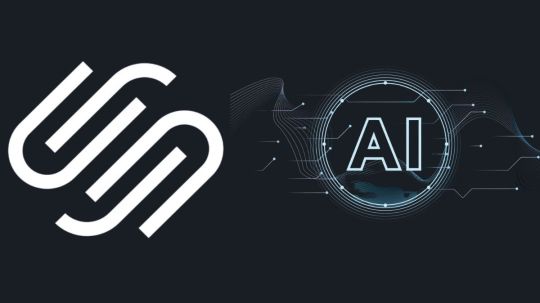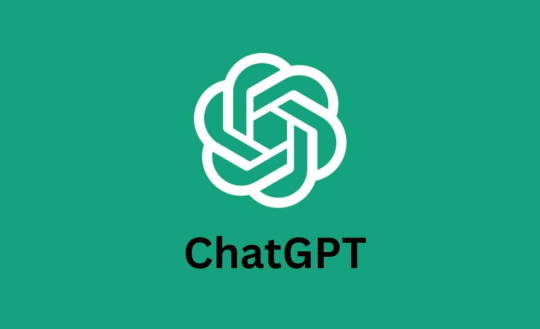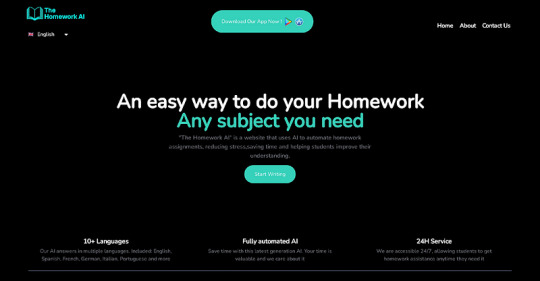#AI sector-specific guidance
Explore tagged Tumblr posts
Text
Latest AI Regulatory Developments:
As artificial intelligence (AI) continues to transform industries, governments worldwide are responding with evolving regulatory frameworks. These regulatory advancements are shaping how businesses integrate and leverage AI technologies. Understanding these changes and preparing for them is crucial to remain compliant and competitive. Recent Developments in AI Regulation: United Kingdom: The…

View On WordPress
#AI#AI compliance#AI data governance#AI democratic values#AI enforcement#AI ethics#AI for humanity#AI global norms#AI human rights#AI industry standards#AI innovation#AI legislation#AI penalties#AI principles#AI regulation#AI regulatory framework#AI risk classes#AI risk management#AI safety#AI Safety Summit 2023#AI sector-specific guidance#AI transparency requirements#artificial intelligence#artificial intelligence developments#Bletchley Declaration#ChatGPT#China generative AI regulation#Department for Science Innovation and Technology#EU Artificial Intelligence Act#G7 Hiroshima AI Process
1 note
·
View note
Text
#TheeForestKingdom
[#TheeGreatTree, #Thee100Provinces, #TheeFourQuadrants]

For the sectors and administrations of these realms, here’s a detailed layout based on their unique characteristics and thematic functions:

#TheeGreatTree and #TheeForestKingdom
Central Administration: The Council of Thee Rings, located within #TheeGreatTree, manages all provinces and quadrants.
Thee100Provinces: Each province has a localized administration led by a Caretaker or Guardian, handling cultural, natural, and mystical duties unique to each province.

Provincial Districts:
Nature Districts: Forests, lakes, and sanctuaries with guardians preserving flora and fauna.
Enchanted Territories: Mystical areas governed by mages or healers who specialize in ancient spells and nature magic.
Trade Hubs: Designated areas for commerce, managed by trade ministers, where artisans and merchants converge.
#TheeFourQuadrants
Each quadrant has semi-autonomous governance, with specialized roles and purposes:
North Quadrant: Defensive stronghold led by Shieldmasters.
East Quadrant: Scholarly and knowledge-focused, governed by Lorekeepers who collect and archive ancient knowledge.
South Quadrant: Trade and economic center, managed by a council of Trade Ministers.
West Quadrant: Exploration and outer-world relations, led by Pathfinders.
The Underground Fai/Fei/Fairy Realms

Central Court: The Fairy High Court beneath #TheeGreatTree functions as the ultimate governing body of all Fai/Fei realms.
Elemental Realms: Each realm is an independent state with a High Fairy or Elder presiding:
Earth Realm: Managed by the Stone Elders, focused on nurturing minerals and gems.
Water Realm: Ruled by the Tide Guardians, responsible for enchanted rivers and waters.
Fire Realm: Led by Flamekeepers, overseeing subterranean fires and lava flows.
Air Realm: Governed by Windwatchers, caretakers of tunnels filled with magical winds and currents.
100 Heavenly Realms and Castle in the Sky

Castle in the Sky: The divine administration palace housing the Celestial Order, which oversees the 100 Heavenly Realms.
Hierarchical Realms:
Celestial Circle: Directly under the Castle, managed by Angelics who ensure harmony.
Stellar Isles: Realms assigned to celestial guides and star-watchers, maintaining cosmic balance.
Divine Pathways: Pathways and bridges between realms are overseen by Pathwardens, who facilitate travel between the realms.
#TheeDarkGrandTreeOak and the 100 Circles of Hells

The Central Dark Court: Located within #TheeDarkGrandTreeOak, it is led by The Dark Tribunal.
Circles of Hells:
Each circle has its own overseer, titled as a Warden of the Dark, focusing on punishment or confinement.
Outer Circles: These are less harsh and focus on minor transgressions, governed by lower-ranking Wardens.
Inner Circles: The darkest regions, ruled by high-ranking Wardens with specialized powers.
Dark Harrowing Quadrants: Managed by Dreadlords, each quadrant hosts wicked and twisted beings under strict control.
Let me know if you’d like more specific details or enhancements for each sector! For linking data with Ai King, Copilot, and Garth AI, you may need a development setup that can integrate data structures. Let me know if you need additional guidance on that.
#Thee Forest kingdom#Thee100Provinces#Thee great tree#Thee four quadrants#TheeDarkGrandTreeOak#TheFaiRealms#TheheavenlyRealms#Heavenly Hierarchy#Disney kingdoms#Bambis kingdom#mousequteers#disneymanga#marvel#mouseclubmanga#disney#disneyaesthetics#enxanting#chanel
24 notes
·
View notes
Text
The US Patent and Trademark Office banned the use of generative artificial intelligence for any purpose last year, citing security concerns with the technology as well as the propensity of some tools to exhibit “bias, unpredictability, and malicious behavior,” according to an April 2023 internal guidance memo obtained by WIRED through a public records request. Jamie Holcombe, the chief information officer of the USPTO, wrote that the office is “committed to pursuing innovation within our agency” but are still “working to bring these capabilities to the office in a responsible way.”
Paul Fucito, press secretary for the USPTO, clarified to WIRED that employees can use “state-of-the-art generative AI models” at work—but only inside the agency’s internal testing environment. “Innovators from across the USPTO are now using the AI Lab to better understand generative AI's capabilities and limitations and to prototype AI-powered solutions to critical business needs,” Fucito wrote in an email.
Outside of the testing environment, USPTO staff are barred from relying on AI programs like OpenAI’s ChatGPT or Anthropic’s Claude for work tasks. The guidance memo from last year also prohibits the use of any outputs from the tools, including images and videos generated by AI. But Patent Office employees can use some approved AI programs, such as those within the agency’s own public database for looking up registered patents and patent applications. Earlier this year, the USPTO approved a $75 million contract with Accenture Federal Services to update its patent database with enhanced AI-powered search features.
The US Patent and Trademark Office, an agency within the Department of Commerce, is in charge of protecting inventors, awarding patents, and registering trademarks. It also “advises the president of the United States, the secretary of commerce, and US government agencies on intellectual property (IP) policy, protection, and enforcement,” according to the USPTO’s website.
At a Google-sponsored event in 2023, Holcombe, the author of the guidance memo, said government bureaucracy makes it difficult for the public sector to use new technologies. “Everything we do in the government is pretty stupid, when you compare it to the commercial world, right?” he said. Holcombe specifically cited cumbersome budgeting, procurement, and compliance processes, arguing that they hamper the government's ability to rapidly adopt innovations like artificial intelligence.
The USPTO is not the only government agency to ban staff from using generative AI, at least for some purposes. Earlier this year, the National Archives and Records Administration prohibited the use of ChatGPT on government-issued laptops, according to 404 Media. But soon afterward, the National Archives hosted an internal presentation that encouraged employees to “think of [Google’s] Gemini as a co-worker.” During the meeting, some archivists reportedly expressed concerns about the accuracy of generative AI. Next month, the National Archives is planning to release a new public chatbot for accessing archival records developed with technology from Google.
Other US government agencies are using—or avoiding—generative AI in different ways. The National Aeronautics and Space Administration, for example, specifically banned the use of AI chatbots for sensitive data. NASA did decide, however, to experiment with the technology for writing code and summarizing research. The agency also announced last week that it’s working with Microsoft on an AI chatbot that can aggregate satellite data to make it easily searchable. That tool is available only to NASA scientists and researchers, but the goal is to “democratize access to spaceborne data.”
9 notes
·
View notes
Text
Squarespace Blueprint AI Improves Great Website Creativity

Squarespace Blueprint AI Review
Squarespace ensures that you present yourself genuinely and professionally online, with all the tools you need to be successful. Squarespace Blueprint AI, its assisted design technology, allows you to create a stunning, distinctive online presence from the ground up.
You have more creative control up front when you use Squarespace Blueprint AI. You receive all the advantages of its user-friendly design toolkit and versatile website editor, Fluid Engine, along with the advantages of Design Intelligence AI-powered technology educated on the Squarespace design experience you trust.
How the design system works
A brand-new interactive design tool called Squarespace Blueprint AI enables any Squarespace user to launch a new website. After answering a few questions about your objectives, sector, and brand personality, you will receive recommendations for your website’s structure, color scheme, and font combinations, along with a variety of styles to pick from.
Finding AI-generated content for your website can be done in a variety of ways, but Squarespace has automated the entire process using the data you supply while maintaining a strict standard for relevancy and quality. Its in-house design team starts by providing you with high-quality images and writing that are appropriate for a professional website.
You’ll receive a real-time preview of the Artificial Intelligence AI website you’re creating as you make decisions, along with customized design guidance to position you for success. When you’re done, the system turns your selections into the building blocks of a stunning, customized website that you may modify at any moment.
Although there are billions of possible design variations with its guided design method, you will end up with a design that is entirely tailored to your requirements.
After you’re done, you may use Squarespace AI to get a jump start on any remaining website copy. The Artificial Intelligence AI writer can handle the remainder based on the information you’ve provided about yourself and the writing style you’ve chosen.
Why you should start with Squarespace Blueprint AI
Website development is not standardized. Squarespace Blueprint AI may help users who want more customization right away or are unclear where to start with Squarespace’s template library.
Best option for those who want:
Upfront, on-brand personalization
Blueprint AI works like a creative collaborator to turn your company’s information or brand into a completely customized website starting point, aligning the initial content, design, and user experience more closely with your unique goals and objectives.
Material that has been pre-vetted
Its design staff individually selects all AI-generated images and copy, so you may begin with better website material tailored to your specific requirements. As a result, less changes will be required later to make it launch-ready.
Customized design suggestions
Throughout the interactive process, you will receive personalized design suggestions based on your stated objectives, assisting you in selecting the website parts, pages, and styling that best suit your requirements.
A systematic approach
Squarespace Blueprint AI is a great substitute if none of the options in its template library seem appropriate or if you��re unsure of where to begin. You can choose each component separately rather than from a list of pre-made templates.
What are the benefits of Squarespace Blueprint AI?
Squarespace Blueprint AI helps you get started with a website that is specifically tailored to your company’s needs and brand. Because of its adaptability, you can change the content and design of your website whenever necessary.
With professional assistance from Squarespace at every stage, the guided design system gives you complete control over your design. After completing the interactive experience, you have complete access to the Squarespace Website Builder, allowing you to use its Fluid Engine editing system at any moment to make changes.
Simply add your content, links, and images to the pages you’re ready to share, then click publish to make your website publicly accessible. Pages can be added, changed, deleted, or hidden at any moment.
When should you start from the template library?
You still get the greatest, most innovative website development experience when you customize a pre-made design.
Using the template collection as a starting point could be ideal if you:
Keep a certain purpose in mind
From portfolio websites to alternatives for restaurants, events, and beauty, the template library offers sections for a variety of use cases and sectors. Starting with a pre-made template design could be easier if your website falls neatly into one of those categories.
Prefer a different type of guidance
You can change and personalize the placeholder sections and pages included in a pre-built design, giving you a clear idea of which elements belong where.
View a template that reflects your style:
Don’t be afraid to start customizing if a template in its library contains the pages or features you require and matches the style of your company or brand.
How to start with Squarespace Blueprint AI
When is the best time to begin using the template library?
To begin using the guided design system, go to the AI website builder and follow these instructions.
Make an account with Squarespace. From your account dashboard, you may make changes to your website, add e-commerce and appointment features, and more.
Give your website a name. Your brand or business name is a nice place to start for most, but you can modify it later. Try its free business name generator if you need some ideas.
Choose a personality for your brand. Choose the personality type that most closely resembles the style of your brand, whether it be professional or eccentric.
Create your home page. Add sections for items, social network accounts, featured content, a contact form, and more, and decide how you want to present your brand.
Include more pages. Include sections that you are certain you will need, such as a comprehensive about page, contact page, online store, or a list of your services. As you work, you’ll be able to see how your pages will appear.
Select a color scheme. Choose from color schemes created by talented designers. If you run a mindfulness-based business, for instance, Design Intelligence will recommend colors that are neutral and align with the vibe you want people to get from your brand and website.
Choose your typefaces. Select typefaces that are serif, sans serif, or a combination of the two. Similar to your color scheme, you will be given carefully chosen combinations to try out in order to select one that complements your branding. For instance, a company that has a more lively image would benefit from using a bold, sans serif typeface.
Ask an AI to help. After you make your selections, Squarespace AI will create pre-filled site language and visuals that are customized to your brand’s personality. You may always adjust your brand personality or re-generate any pre-filled material.
Once everything is complete, publish. Using the Squarespace Website Builder, add unique photos, page names, and other content to give your bespoke website a finishing touch.
Keep in mind that you can always publish the homepage first, then wait to publish the remaining pages while you finish refining them. Once your website is up, you can return at any time to make adjustments.
Read more on Govindhtech.com
#Squarespace#BlueprintAI#WebsiteCreativity#SquarespaceBlueprint#AI#AIwebsite#Blueprint#ArtificialIntelligence#News#Technews#Technology#Technologynews#Technologytrends#govindhtech
2 notes
·
View notes
Text
Oct. 30 (UPI) -- President Joe Biden signed an executive order Monday that slaps new requirements on tech developers to mitigate the risks of artificial intelligence and establishes new safety standards that aim to protect privacy and national security.
Biden's directive is the most sweeping action yet to regulate AI, and entails several strategies to limit safety and security risks to the nation, including a trust-but-verify arrangement between the government and the private sector.
The order requires AI system developers to share safety test results and other critical information with the administration as they become available, especially in cases where an AI model poses a serious risk to national security, national economic security, or national public health and safety, the White House announced in a statement.
Under the order, Biden also calls on the National Institute of Standards and Technology to establish rigorous safety testing for the technology before it's made available to the public.
Biden directed the Department of Homeland Security to establish the AI Safety and Security Board, which will apply the standards to critical infrastructure in an effort to limit chemical, biological, radiological, nuclear, and cybersecurity threats.
The president told agencies that fund scientific research to attach specific conditions to federal funding for companies responsible for mitigating risks associated with AI-engineered biological materials.
"These measures will ensure AI systems are safe, secure, and trustworthy before companies make them public," the White House said.
Biden also ordered the Department of Commerce to develop public guidance for content authentication and watermarking to clearly label AI-generated content.
"Federal agencies will use these tools to make it easy for Americans to know that the communications they receive from their government are authentic -- and set an example for the private sector and governments around the world," the statement said.
Biden ordered White House Chief of Staff Jeff Zients and the National Security Council to develop further AI security actions to protect the military and intelligence communities.
The order also creates an advanced cybersecurity program to develop tools that would fix vulnerabilities in AI software.
Biden's order builds on several previous actions by the president to ensure safe and transparent development of the emerging technology, while he was also preparing to deliver legislation to Congress that seeks to protect the nation from AI's harmful potential.
The administration has secured commitments from more than a dozen tech companies to take a responsible approach to developing artificial intelligence for ethical purposes.
The order also contains priorities to protect individual privacy through stronger cryptographic tools and other protective technologies.
Biden called for government agencies to evaluate how they collect and use commercially available information to account for any AI risks.
The executive order builds on the administration's Blueprint for an AI Bill of Rights, which was released earlier this year to promote responsible innovation in the field.
In February, Biden ordered all federal agencies to uproot bias in their technological action plans and to protect the public from algorithmic racial discrimination, which is also one of the primary capabilities of AI technology.
Biden's executive order reiterates these commitments, emphasizing the importance of countering bias and other forms of discrimination in AI to maintain equity in areas such as justice, healthcare, and housing.
Previously, the administration said it would continue working with the companies over time to keep controls on pace with AI's future development.
Biden's order also addresses AI's potential impact on the labor market, education, and consumer spending.
8 notes
·
View notes
Text
Cross-Platform App Development In Dubai - An Insightful Guide To Follow

In the heart of the United Arab Emirates, the dynamic world of mobile app development is evolving rapidly, and Dubai is at its forefront. This guide delves into the world of cross-platform app development, highlighting its essentials and showcasing leading mobile app development firms in the UAE, like ARS Webtech.
An Insightful Overview About Cross-Platform App Development
Cross-platform app development involves creating mobile applications that run on multiple platforms using a single codebase. This approach contrasts with traditional native app development, which requires writing separate code for each platform, such as Java or Kotlin for Android and Swift or Objective-C for iOS.
Benefits of Cross-Platform App Development By Mobile App Development Companies UAE
Code Reusability: Developers can write and manage code that works across various platforms, reducing development time and effort.
Cost and Time Efficiency: Faster and more economical than developing individual native apps, it simplifies the entire development cycle.
Wider Market Reach: A single app can target different platforms, expanding market reach.
Consistent User Experience: Cross-platform frameworks support maintaining a consistent experience across platforms.
Faster Deployment and Updates: Facilitates simultaneous feature release across all platforms.
Popular Cross-Platform Development Frameworks
Flutter: Known for creating visually appealing apps, it's a strong choice for businesses in Dubai.
React Native: Supported by Facebook, it allows developers to build mobile apps using React and JavaScript, known for its flexibility and seamless integration.
Best Practices In Cross-Platform App Development
Prioritize User Experience: Ensuring apps function flawlessly with an intuitive interface is crucial.
Security Considerations: Especially important in sectors like healthcare and e-commerce, robust security measures are essential.
Scalability: The app should accommodate increased user traffic and additional features as the business grows.
Regular Updates and Maintenance: Ensuring the app remains compatible with the latest operating systems and user expectations.
Integration of Emerging Technologies: Incorporating AI, IoT, 5G connectivity, and machine learning enhances user experiences and contributes to Dubai's smart city initiatives.
Blockchain for Increased Security: Integrating blockchain technologies can add an extra layer of security, particularly in sensitive industries.
Conclusion
Cross-platform app development is a strategic choice for businesses in Dubai looking to maximize their digital presence. Companies like ARS Webtech are at the forefront of this movement, driving innovation and excellence in the mobile app development scene.
FAQs
1. Which frameworks are commonly used for cross-platform app development in Dubai?
Flutter and React Native are two prominent frameworks. Flutter is known for its visually stunning apps, while React Native offers flexibility and seamless integration.
2. How do mobile app development companies in Dubai prioritize user experience in cross-platform apps?
User experience is a top priority, ensuring consistent and delightful interfaces across devices.
3. How to choose between Flutter and React Native?
The choice depends on specific project requirements, design preferences, development speed, and existing tech stacks.
For further guidance or to start your cross-platform app development journey, contact ARS Webtech at +971585840413.
#ios app development#mobile app company#mobile app developer company#android#digital marketing#mobile app#digital marketing agency#digital marketing company#digital marketing strategy#digital marketing services
2 notes
·
View notes
Text
Recruitment service in Gurgaon
Gurgaon, India's millennial hotspot, pulsates with the energy of startups, MNCs, and ambitious individuals all vying for their piece of the pie. But in this dynamic landscape, finding the right talent can feel like scaling Mount Everest blindfolded. That's where Brooks, Gurgaon's premier recruitment service provider, steps in, acting as your sherpa to the talent summit.
Beyond Resumes: Unveiling the Human Potential
Gone are the days of sifting through endless resumes. Brooks goes beyond the superficial, delving deep to understand your company culture, specific needs, and ideal candidate profile. We employ a blend of cutting-edge technology and human intuition to identify individuals who not only possess the requisite skills but also seamlessly integrate into your unique work environment.
Our Recruitment Arsenal: A Multifaceted Approach
Brooks boasts a diverse recruitment arsenal, ensuring we find the perfect match for every role:
Executive Search: Headhunting top talent for leadership positions, leveraging our extensive network and deep industry knowledge. Mid-Level and Professional Recruitment: Identifying and attracting high-performing professionals across various sectors. Campus Recruitment: Tapping into the fresh talent pool from Gurgaon's prestigious universities and colleges. Contractual Staffing: Providing temporary workforce solutions for specific projects or peak seasons. Employer Branding: Crafting a compelling employer brand that attracts and retains top talent. Technology Meets the Human Touch: A Winning Formula
We leverage cutting-edge AI-powered platforms to streamline the recruitment process, but never lose sight of the human element. Our experienced team of consultants personally interacts with both candidates and clients, ensuring a personalized and effective experience for everyone involved.
Beyond Recruitment: Building Partnerships
We understand that recruitment is not just about filling positions; it's about building long-term partnerships. We work closely with you to understand your company's growth trajectory and talent needs, providing ongoing support and strategic guidance to ensure a successful talent acquisition strategy.
Ready to Scale Your Gurgaon Success Story?
Let Brooks be your recruitment compass, guiding you to the hidden gems in Gurgaon's talent pool. Contact us today for a free consultation and unlock the full potential of your workforce.
Remember, with Brooks, your recruitment journey in Gurgaon will be:
Efficient: We save you time and resources by finding the right talent quickly and effectively. Effective: We identify candidates who not only possess the skills but also the cultural fit to thrive in your organization. Strategic: We partner with you to develop a long-term talent acquisition strategy that aligns with your business goals. Gurgaon's talent landscape is ripe for the picking. Let Brooks help you harvest the best!
Bonus Tip:Recruitment service in Gurgaon
Include success stories or testimonials from clients who have used Brooks' recruitment services in Gurgaon. Offer a free downloadable resource, such as a guide to hiring top talent in Gurgaon. Highlight any awards or recognitions that Brooks has received for its recruitment services. By incorporating these suggestions and tailoring the content to Brooks' specific strengths and offerings, you can create a compelling blog that attracts businesses seeking to hire top talent in Gurgaon's dynamic job market. Remember, the right talent can be the difference between scaling new heights and getting lost in the maze. With Brooks as your guide, your Gurgaon recruitment journey is guaranteed to be a success story.
I hope this blog provides a good starting point for your keyword "Recruitment service in Gurgaon from Brooks." Feel free to adjust it to reflect your specific company offerings and brand voice.
#top eor providers in india#best payroll services provider in delhi & ncr#consultant payroll services in india#posh training in india
2 notes
·
View notes
Text
ChatGPT: Your Personal Trading Assistant for Informed Decision-Making

Enhancing Your Trading Journey with the Power of AI By Amir Shayan In today's fast-paced financial markets, staying ahead of the competition and making informed trading decisions is crucial. The advent of artificial intelligence (AI) has brought about a revolution in the trading industry, empowering traders with advanced tools and insights to navigate the complexities of the market. One such innovative AI application is ChatGPT, a conversational AI model developed by OpenAI. In this article, we will explore how ChatGPT can serve as your personal trading assistant, providing real-time information, analysis, and support to help you make smarter trading decisions. Whether you are a seasoned trader or a beginner, ChatGPT can be a valuable tool in your trading arsenal.
Understanding ChatGPT
ChatGPT is an AI-powered language model that leverages deep learning techniques to generate human-like text responses based on the input it receives. It has been trained on a vast amount of data from diverse sources, enabling it to understand and generate coherent and contextually relevant responses. With its ability to understand natural language and generate text, ChatGPT can simulate human-like conversations and provide tailored information to users.
Benefits of ChatGPT in Trading
- Real-time Market Updates: ChatGPT can keep you informed about the latest market news, price movements, and trends. By analyzing vast amounts of data from various sources, it can provide you with up-to-date information and insights that can help you stay ahead of market developments. - Technical Analysis: ChatGPT can assist in technical analysis by analyzing historical price data, identifying patterns, and generating insights. It can help you spot potential entry and exit points, support and resistance levels, and other key technical indicators to inform your trading strategies. - Fundamental Analysis: In addition to technical analysis, ChatGPT can also help with fundamental analysis by providing insights into company financials, industry trends, and macroeconomic factors that may impact the market. It can assist in evaluating the intrinsic value of stocks, assessing company performance, and identifying investment opportunities. - Risk Management: ChatGPT can provide risk management guidance by analyzing portfolio diversification, assessing risk-reward ratios, and suggesting risk mitigation strategies. It can help you optimize your risk management approach and make more informed decisions to protect your investments. - Trade Execution: ChatGPT can facilitate trade execution by providing real-time quotes, order placement assistance, and trade execution recommendations. It can streamline the trading process and help you execute trades efficiently and effectively.
How to Use ChatGPT for Trading
- Asking Questions: You can ask ChatGPT questions about specific stocks, market trends, or trading strategies. It will generate responses based on its knowledge and analysis of the data it has been trained on. For example, you can ask, "What are the key factors influencing the stock market today?" or "What is the outlook for XYZ stock?" - Getting Insights: ChatGPT can provide insights and analysis on various aspects of trading, such as technical indicators, market sentiment, and sector performance. You can ask for specific technical indicators like moving averages or support and resistance levels, or inquire about the sentiment around a particular stock or industry. - Strategy Evaluation: ChatGPT can assist in evaluating trading strategies by analyzing historical data and simulating potential outcomes. You can discuss your trading strategy with ChatGPT, and it can provide feedback, suggest improvements, or highlight potential risks. - Portfolio Management: ChatGPT can help you manage your portfolio by providing suggestions for portfolio diversification, monitoring performance, and identifying rebalancing opportunities. It can analyze your holdings, assess their performance, and provide insights on potential adjustments to optimize your portfolio.
Limitations and Considerations
While ChatGPT can be a valuable trading assistant, it is important to understand its limitations and use it as a complementary tool rather than a sole decision-making authority. Here are a few considerations: - Data Limitations: ChatGPT relies on the data it has been trained on, which may not capture real-time market events or unique situations. It is essential to verify information provided by ChatGPT with reliable and up-to-date sources. - Emotional Factors: ChatGPT does not possess emotions or subjective judgment. It is important to consider human intuition and emotional factors when making trading decisions. Use ChatGPT's insights as part of your decision-making process, taking into account your own analysis and risk tolerance. - Technical Accuracy: While ChatGPT strives to provide accurate information, there is a possibility of occasional errors or inaccuracies. Always double-check critical information and consult other reliable sources before making trading decisions.
Conclusion
In the era of AI-driven technologies, ChatGPT has emerged as a powerful tool for traders. Its ability to understand natural language and generate human-like responses makes it an ideal personal trading assistant. By leveraging the capabilities of ChatGPT, traders can access real-time market updates, technical and fundamental analysis, risk management guidance, and trade execution support. However, it is crucial to recognize its limitations and use it as part of a comprehensive decision-making process. Incorporating human judgment, emotional intelligence, and critical thinking alongside ChatGPT's insights can help traders make informed decisions and navigate the complexities of the financial markets with confidence. In summary, ChatGPT is revolutionizing the way traders approach their decision-making process. With its AI-powered capabilities, it serves as a valuable resource for market analysis, strategy evaluation, and portfolio management. By harnessing the power of ChatGPT, traders can stay ahead of market trends, make data-driven decisions, and ultimately enhance their trading performance. Embrace the AI revolution in trading and let ChatGPT be your trusted companion on the journey to trading success. Read the full article
#AIintrading#algorithmictrading#ArtificialIntelligence#Data-drivendecisions#decisionmaking#FinancialTechnology#marketanalysis#Personaltradingassistant#tradingstrategies#Tradingtools
4 notes
·
View notes
Text
5 Ways Augmented Reality Is Changing Engineering Maintenance

You’re living in a time where engineering maintenance no longer relies solely on clipboards and troubleshooting manuals. Augmented Reality (AR) has become a powerful tool, reshaping how technicians, engineers, and service teams interact with machines and infrastructure. Whether you're managing critical systems in manufacturing or conducting field repairs on complex equipment, AR is giving you a way to work faster, safer, and with fewer errors. In this article, you’ll explore five specific ways AR is actively changing engineering maintenance today, supported by real-world use cases and current industry practices.
1. Real-Time, Hands-Free Guidance in Complex Repairs
When you're troubleshooting an industrial pump or replacing a high-voltage module, every second and every step matters. Augmented Reality provides you with interactive, on-the-spot instructions directly in your line of sight—without needing to reach for a paper manual or flip through a PDF on a tablet. Using smart glasses or AR-enabled mobile devices, you can overlay animated instructions, exploded diagrams, or system metrics directly on top of the machine you're working on.
This reduces your cognitive load and minimizes human error. Instead of trying to recall the correct torque spec from memory, you can see it floating next to the part. It also gives you more room to focus on precision—your hands are free, and your eyes never leave the work surface. This capability is particularly helpful for new technicians or when working on unfamiliar equipment, because it turns complex tasks into guided workflows you can follow with confidence.
2. Better Predictive Maintenance Through AR Data Integration
Preventive maintenance is good, but predictive maintenance—supported by AR—is smarter. You're now able to integrate sensor data directly into your field of view while inspecting equipment. Imagine checking a gearbox and seeing its vibration history, oil temperature trends, and maintenance logs in real time as you're looking at it.
This isn’t theory—it’s being used today in energy, aerospace, and manufacturing sectors. With AR, you’re not guessing which component might fail next. You’re responding to hard data that’s visually attached to the component you’re inspecting. This reduces unplanned downtime and allows you to allocate resources based on actual conditions rather than fixed schedules.
By combining AR with AI-powered analytics, you can prioritize which systems need attention and when. It streamlines asset management, shortens response times, and improves how you plan your service schedules—all of which help your organization avoid costly disruptions.
3. Remote Collaboration with Experts—No Matter Where They Are
There’s a huge value in being able to connect instantly with a specialist who isn't on-site. With AR-enabled headsets, remote experts can see what you see in real time, talk you through diagnostics, and draw annotations directly into your visual field. That means you can get step-by-step support from a colleague across the country or even from the equipment manufacturer halfway around the world.
This isn't just about convenience. It saves travel costs, improves response times, and ensures that you can resolve critical issues faster without waiting for someone to fly in or drive out. During a global supply chain crunch or labor shortage, this becomes even more valuable. You also create training opportunities—your less-experienced team members can perform advanced tasks under expert guidance, without ever leaving the shop floor.
In fields like aerospace, oil and gas, and large-scale infrastructure, this is already a standard way to handle highly specialized service procedures.
4. Faster, More Effective Technical Training
Training through AR isn't just a trend—it’s proving to be one of the most efficient ways to onboard and upskill new talent. Instead of watching static videos or reading manuals, your team can interact with a virtual environment that mimics the equipment they’ll work on. They can walk through a repair process virtually, rehearse tasks before performing them live, and get instant feedback when they make mistakes.
This hands-on learning leads to faster comprehension and better retention. It also improves safety—trainees can make all the rookie mistakes in a virtual scenario without damaging real equipment or risking injury. And once they’re on the floor, they can still use AR to reinforce what they learned, filling in knowledge gaps on the fly.
From an organizational perspective, this training model reduces the cost and time of onboarding while keeping everyone aligned with best practices. It also allows you to train multiple people simultaneously using shared AR environments.
5. Smarter Documentation and Streamlined Compliance
Keeping accurate service records is critical in regulated industries. With AR, you can log maintenance activities automatically as you complete tasks. Your headset or device can time-stamp your actions, record visual confirmation, and attach data to the digital maintenance history of the asset. That means less paperwork, more accurate reporting, and faster compliance checks.
You’re also able to access past service history, certifications, manuals, and part specifications without leaving the work area. If an audit or inspection comes up, your records are already organized and backed by visual proof. This makes your work easier and helps ensure that your department stays in good standing with regulatory bodies.
For companies dealing with ISO, FDA, or FAA regulations, the documentation automation provided by AR is not just helpful—it’s becoming a key component of their quality assurance systems.
How AR Is Used in Engineering Maintenance
Delivers hands-free repair instructions
Supports predictive maintenance with live data
Enables remote expert collaboration
Accelerates hands-on technical training
Automates documentation and compliance
In Conclusion
AR isn't a distant promise—it’s a working tool that’s actively changing how you approach engineering maintenance. It gives you real-time access to instructions, data, and expert input, while improving safety, reducing downtime, and streamlining training and documentation. If you're involved in technical operations, facility management, or industrial maintenance, integrating AR into your workflow is no longer optional—it's a competitive advantage. As the technology becomes more affordable and more widely adopted, your ability to use it effectively will define your efficiency and reliability in the field.
For more insights on emerging technologies in industrial maintenance and marine systems, follow along at X (Twitter) profile.
0 notes
Text
Can the US really enforce a global AI chip ban?
New Post has been published on https://thedigitalinsider.com/can-the-us-really-enforce-a-global-ai-chip-ban/
Can the US really enforce a global AI chip ban?
When Huawei shocked the global tech industry with its Mate 60 Pro smartphone featuring an advanced 7-nanometer chip despite sweeping US technology restrictions, it demonstrated that innovation finds a way even under the heaviest sanctions. The US response was swift and predictable: tighter export controls and expanded restrictions.
Now, with reports suggesting Huawei’s Ascend AI chips are approaching Nvidia-level performance—though the Chinese company remains characteristically silent about these developments—America has preemptively escalated its semiconductor war to global proportions.
The Trump administration’s declaration that using Huawei’s Ascend chips “anywhere in the world” violates US export controls reveals more than policy enforcement—it exposes a fundamental fear that American technological dominance may no longer be guaranteed through restrictions alone.
This global AI chip ban emerged on May 14, 2025, when President Donald Trump’s administration rescinded the Biden-era AI Diffusion Rule without revealing details of a replacement policy.
Instead, the Bureau of Industry and Security (BIS) announced guidance to “strengthen export controls for overseas AI chips,” specifically targeting Huawei’s Ascend processors.
The new guidelines warn of “enforcement actions” including imprisonment and fines for any global business found using these Chinese-developed chips—a fundamental departure from traditional export controls, which typically govern what leaves a country’s borders, not what happens entirely outside them.
The scope of America’s tech authority
The South China Morning Post reports that these new guidelines explicitly single out Huawei’s Ascend chips after scrapping the Biden administration’s country-tiered “AI diffusion” rule. But the implications of this global AI chip ban extend far beyond bilateral US-China tensions.
By asserting jurisdiction over global technology choices, America essentially demands that sovereign nations and independent businesses worldwide comply with its domestic policy preferences.
This extraterritorial approach raises fundamental questions about national sovereignty and international trade. Should a Brazilian AI startup be prevented from using the most cost-effective chip solution simply because those chips are manufactured by a Chinese company?
Should European research institutions abandon promising collaborations because they involve hardware Washington deems unacceptable?
According to Financial Times reporting, BIS stated that Huawei’s Ascend 910B, 910C, and 910D were all subject to the regulations as they were likely “designed with certain US software or technology or produced with semiconductor manufacturing equipment that is the direct product of certain US-origin software or technology, or both.”
Industry resistance to universal controls
Even within the United States, the chipmaking sector expresses alarm about Washington’s semiconductor policies. The aggressive expansion of export controls creates uncertainty beyond Chinese companies, affecting global supply chains and innovation partnerships built over decades.
“Washington’s new guidelines are essentially forcing global tech firms to pick a side – Chinese or US hardware – which will further deepen the tech divide between the world’s two largest economies,” analysts note. This forced binary choice ignores the nuanced reality of modern technology development, where innovation emerges from diverse, international collaborations.
The economic implications prove staggering. Recent analysis indicates Huawei’s Ascend 910B AI chip delivers 80% of Nvidia A100’s efficiency when training large language models, though “in some other tests, Ascend chips can beat the A100 by 20%.”
By blocking access to competitive alternatives, this global AI chip ban may inadvertently stifle innovation and maintain artificial market monopolies.
The innovation paradox
Perhaps most ironically, policies intended to maintain American technological leadership may undermine it. Nvidia CEO Jensen Huang acknowledged earlier this month that Huawei was “one of the most formidable technology companies in the world,” noting that China was “not behind” in AI development.
Attempting to isolate such capabilities through global restrictions may accelerate the development of parallel technology ecosystems, ultimately reducing American influence rather than preserving it.
The secrecy surrounding Huawei’s Ascend chips—with the company keeping “details of its AI chips close to its chest, with only public information coming from third-party teardown reports”—has intensified with US sanctions.
Following escalating restrictions, Huawei stopped officially disclosing information about the series, including release dates, production schedules, and fabrication technologies. The chips specified in current US restrictions, including the Ascend 910C and 910D, haven’t even been officially confirmed by Huawei.
Geopolitical ramifications
In a South China Morning Post’s report, Chim Lee, a senior analyst at the Economist Intelligence Unit, warns that “if the guidance is enforced strictly, it is likely to provoke retaliation from China” and could become “a negotiating point in ongoing trade talks between Washington and Beijing.”
This assessment underscores the counterproductive nature of aggressive unilateral action in an interconnected global economy.
The semiconductor industry thrives on international collaboration, shared research, and open competition. Policies that fragment this ecosystem serve no one’s long-term interests—including America’s.
As the global community grapples with challenges from climate change to healthcare innovation, artificial barriers preventing the best minds from accessing optimal tools ultimately harm human progress.
Beyond binary choices
The question isn’t whether nations should protect strategic interests—they should and must. But when export controls extend “anywhere in the world,” we cross from legitimate national security policy into technological authoritarianism. The global technology community deserves frameworks that balance security concerns with innovation imperatives.
This global AI chip ban risks accelerating the technological fragmentation it seeks to prevent. History suggests markets divided by political decree often spawn parallel innovation ecosystems that compete more effectively than those operating under artificial constraints.
Rather than extending controls globally, a strategic approach would focus on out-innovating competitors through superior technology and international partnerships. The current path toward technological bifurcation serves neither American interests nor global innovation—it simply creates a more fragmented, less efficient world where artificial barriers replace natural competition.
The semiconductor industry’s future depends on finding sustainable solutions that address legitimate security concerns without dismantling the collaborative networks that drive technological advancement. As this global AI chip ban takes effect, the world watches to see whether innovation will flourish through competition or fragment through control.
See also: Huawei’s AI hardware breakthrough challenges Nvidia’s dominance
Want to learn more about AI and big data from industry leaders? Check out AI & Big Data Expo taking place in Amsterdam, California, and London. The comprehensive event is co-located with other leading events including Intelligent Automation Conference, BlockX, Digital Transformation Week, and Cyber Security & Cloud Expo.
Explore other upcoming enterprise technology events and webinars powered by TechForge here.
#2025#Administration#ai#ai & big data expo#AI chip#AI chips#AI development#America#American#amp#Analysis#approach#artificial#Artificial Intelligence#assessment#automation#ban#biden#Big Data#binary#borders#Business#california#CEO#change#China#chip#chips#climate#climate change
0 notes
Text
The Biden administration’s approach to the governance of artificial intelligence (AI) began with the Blueprint for an AI Bill of Rights, released in October 2022. This framework highlighted five key principles to guide responsible AI development, including protections against algorithmic bias, privacy considerations, and the right to human oversight.
These early efforts set the tone for more extensive action, leading to the release of the Executive Order on Safe, Secure, and Trustworthy Development and Use of Artificial Intelligence, or the White House EO on AI, on October 30, 2023. This EO marked a critical step in defining AI regulation and accountability across multiple sectors, emphasizing a “whole-of-government” approach to address both opportunities and risks associated with AI. Last week, it reached its one-year anniversary.
The 2023 Executive Order on Artificial Intelligence represents one of the U.S. government’s most comprehensive efforts to secure the development and application of AI technology. This EO set ambitious goals aimed at establishing the U.S. as a leader in safe, ethical, and responsible AI use. Specifically, the EO directed federal agencies to address several core areas: managing dual-use AI models, implementing rigorous testing protocols for high-risk AI systems, enforcing accountability measures, safeguarding civil rights, and promoting transparency across the AI lifecycle. These initiatives are designed to mitigate potential security risks and uphold democratic values while fostering public trust in the rapidly advancing field of AI.
To recognize the one-year anniversary of the EO, the White House released a scorecard of achievements, pointing to the elevated work of various federal agencies, the voluntary agreements made with industry stakeholders, and the persistent efforts made to ensure that AI benefits the global talent market, accrues environmental benefits, and protects—not scrutinizes or dislocates—American workers.
One example is the work of the U.S. AI Safety Institute (AISI), housed in the National Institute of Standards and Technology (NIST), which has spearheaded pre-deployment testing of advanced AI models, working alongside private developers to strengthen AI safety science. The AISI has also signed agreements with leading AI companies to conduct red-team testing to identify and mitigate risks, especially for general-purpose models with potential national security implications.
In addition, NIST released Version 1.0 of its AI Risk Management Framework, which provides comprehensive guidelines for identifying, assessing, and mitigating risks across generative AI and dual-use models. This framework emphasizes core principles like safety, transparency, and accountability, establishing foundational practices for AI systems’ development and deployment. And just last week, the federal government released the first-ever National Security Memorandum on Artificial Intelligence, which will serve as the foundation for the U.S.’s safety and security efforts when it comes to AI.
The White House EO on AI marks an essential step in shaping the future of U.S. AI policy, but its path forward remains uncertain with the pending presidential election. Since much of the work is being done by and within federal agencies, its tenets may outlive any possible repeal of the EO itself, ensuring the U.S. stays relevant in the development of guidance that balances the promotion of innovation with safety, particularly in national security. However, the EO’s long-term impact will depend on the willingness of policymakers to adapt to AI’s rapid development, while maintaining a framework that supports both innovation and public trust. Regardless of who leads the next administration, navigating these challenges will be central to cementing the U.S.’s role in the AI landscape on the global stage.
In 2023, Brookings scholars weighed in following the adoption of the White House EO. Here’s what they have to say today around the one-year anniversary.
4 notes
·
View notes
Text
Delivering Comprehensive Microsoft Solutions for a Digitally Transformed Future
FOR IMMEDIATE RELEASE
Microsoft Partner UK: Delivering Comprehensive Microsoft Solutions for a Digitally Transformed Future London, UK – April 22, 2025 — As digital transformation accelerates across industries, Microsoft Partner UK (https://microsoftpartner.uk) is establishing itself as a trusted and forward-thinking technology partner for businesses throughout the United Kingdom. With a commitment to excellence and innovation, the company delivers tailored Microsoft-based solutions that empower organizations to work smarter, enhance collaboration, and stay secure in a competitive global market. A Trusted Microsoft Solutions Partner Microsoft Partner UK specializes in implementing and supporting Microsoft’s core technology stack, including Microsoft 365, Microsoft Azure, Dynamics 365, and the Power Platform. By offering fully managed services, licensing, consultancy, and deployment support, the company ensures a seamless and effective transition for businesses into modern digital environments. Key services include: - Microsoft 365 Business Solutions: Seamless integration of Outlook, Teams, SharePoint, and Office applications for improved productivity and collaboration. - Azure Cloud Services: End-to-end cloud migration, configuration, and managed services using Microsoft Azure’s scalable infrastructure. - Dynamics 365 Implementation: CRM and ERP systems to streamline customer engagement, operations, finance, and sales processes. - Power Platform Development: Custom business apps, automated workflows, and intelligent data insights via Power BI, Power Apps, and Power Automate. - Licensing Consultation: Expert guidance on Microsoft licensing plans and compliance for small to large enterprises. - Security & Compliance Solutions: Advanced threat protection, identity management, and data compliance tools aligned with Microsoft security protocols. Embracing Innovation with Artificial Intelligence At the core of Microsoft Partner UK’s mission is a commitment to innovation. Leveraging the AI capabilities of Azure Cognitive Services and Microsoft Copilot, the company helps organizations harness artificial intelligence for enhanced automation, predictive analytics, and intelligent customer service. Client-Centric, Results-Driven With a deep understanding of the local market and sector-specific challenges, Microsoft Partner UK takes a consultative approach to every project. Each solution is designed in close partnership with the client, ensuring alignment with strategic business goals and delivering measurable results. Training & Support In addition to technology deployment, Microsoft Partner UK also offers in-depth user training, ongoing support, and technical consulting. Their certified experts provide a high-touch service model to ensure long-term value and system optimization. About Microsoft Partner UK Microsoft Partner UK is a leading Microsoft Solutions Partner based in the United Kingdom, dedicated to delivering innovative, secure, and scalable Microsoft technologies to enterprises and SMEs. Through an unwavering focus on customer satisfaction and cutting-edge solutions, the company remains at the forefront of digital enablement in the UK. For more information, please visit: https://microsoftpartner.uk
0 notes
Text
Transform Your Homework Experience with AI: The Ultimate Homework Helper for Students

In today’s digital age, technology is changing the way we learn, and the education sector is no exception. Students around the world face challenges when it comes to tackling complex homework problems, meeting deadlines, and understanding difficult concepts. However, with the rise of artificial intelligence (AI), homework solutions have become more accessible and efficient.
If you’re struggling with a tough assignment or simply looking for a smarter way to handle your homework, an AI homework helper for students might be the answer. This cutting-edge technology is designed to assist students with their academic work by providing accurate, instant, and easy-to-understand solutions.
Why You Need an AI Homework Helper for Students
The traditional methods of solving homework often involve long hours of research, memorization, and trial-and-error. While tutors can help, they are not always available when needed. Here’s where AI steps in. An AI homework helper for students like TheHomework.ai provides:
Instant Help: You no longer need to wait for a tutor’s availability. AI is available 24/7, offering real-time assistance whenever you need it.
Wide Range of Subjects: From mathematics and science to history and computer science, AI homework helpers cover a wide array of subjects. This means whether you’re in high school or college, you can find the help you need for almost any assignment.
Step-by-Step Solutions: AI doesn’t just give you the answers — it helps you understand the process. It breaks down complex problems into easy-to-follow steps, making learning more intuitive.
Whether you’re struggling with algebra, biology equations, or writing an essay, the AI homework helper for students simplifies your workload, helping you improve your understanding of each topic.

One of the most impressive aspects of AI-driven platforms like TheHomework.ai is their AI homework problem solver. This tool is specifically designed to help students solve homework problems that seem too difficult to tackle on their own.
Here’s how it works:
Input Your Problem: Simply enter your homework question, and the AI will analyze the problem and provide a solution.
Step-by-Step Guidance: Unlike traditional methods, the AI doesn’t just spit out an answer. It explains the solution step by step, ensuring you understand the reasoning behind the answer.
Clear Explanations: Whether you’re working on math problems or scientific concepts, the AI homework problem solver offers clear and concise explanations, with the help of visuals and diagrams when necessary.
With this advanced technology, students can say goodbye to frustration and confusion over difficult homework problems. Whether you’re trying to solve an equation or figure out a historical timeline, the AI problem solver is here to guide you through the process.
How Using AI Homework Helpers Can Boost Your Grades
With AI-powered homework assistance, students can improve not only their academic performance but also their learning experience. Here’s how:
Time-Saving: AI helps students get their homework done faster, freeing up time for other important tasks or leisure activities.
Learning Efficiency: By breaking down complex concepts into simpler steps, students can better understand the material and retain knowledge.
Self-Confidence: When students understand the steps to solve a problem, their confidence grows. This leads to better results and improved overall performance in school.
An AI homework helper isn’t just about getting your assignments done — it’s about improving your learning process and helping you succeed academically.
Why Choose TheHomework.ai?
TheHomework.ai is a reliable, AI-powered platform offering a personalized, step-by-step homework solving experience. Some key reasons to choose this service include:
No Sign-Up Required: Access the platform immediately — no need to create an account or subscribe to anything.
Mobile-Friendly: TheHomework.ai is accessible from any device, whether you’re on a laptop at home or using your phone while on the go.
Comprehensive Subject Coverage: From math to computer science, TheHomework.ai has you covered for all your homework needs.
Instant Solutions: Get immediate solutions for your homework problems, without waiting.
Conclusion: Make Homework Hassle-Free with AI
If you’re tired of struggling with homework, it’s time to try an AI homework helper for students. Platforms like TheHomework.ai offer a smarter, more efficient way to get through your assignments, and with the AI homework problem solver, you’ll never be stuck on a problem again.
So why wait? Take the first step towards academic success by using AI to handle your homework problems. Visit TheHomework.ai today and experience the future of learning.
0 notes
Text
Startup Guru: Rajesh Shukla’s Expertise in Transforming Startups
In the world of entrepreneurship, having the right mentor can make all the difference. Startups face many challenges, from finding the right product-market fit to managing resources efficiently. A Startup Guru like Rajesh Shukla provides not only strategic insights but also the mentorship needed to help startups thrive in today’s competitive landscape. Rajesh’s deep understanding of business strategy, innovation, and leadership makes him a trusted guide for entrepreneurs looking to build sustainable and successful businesses.
The Importance of a Startup Guru
The journey of a startup can be overwhelming, especially for first-time entrepreneurs. From securing funding to navigating market fluctuations, there are countless hurdles to overcome. This is where a Startup Guru comes in. A mentor who has experience across various industries and understands the intricacies of building a business can offer invaluable guidance. They provide a roadmap, helping startups avoid common pitfalls and encouraging them to focus on what truly matters for growth and scalability.
Rajesh Shukla’s ability to serve as a Startup Guru stems from his broad expertise in various sectors, such as technology, finance, and business strategy. His strategic advice is rooted in years of hands-on experience, and his approach is both practical and visionary. He empowers entrepreneurs to think big, act strategically, and push boundaries while remaining grounded in the realities of the business world.
Rajesh Shukla: A Trusted Startup Guru
Rajesh Shukla is not just an advisor; he is a true Startup Guru who believes in the transformative power of entrepreneurship. His journey has been shaped by a passion for innovation, leadership, and community development. Over the years, he has built a reputation for providing startups with the mentorship they need to navigate the early stages of growth and set themselves up for long-term success.
What makes Rajesh unique is his personalized approach to advising startups. Rather than offering generic solutions, he takes the time to understand the specific challenges a startup is facing. By tailoring his guidance to meet the needs of each business, Rajesh ensures that entrepreneurs receive actionable advice that is both practical and impactful. His mentoring style fosters trust and collaboration, creating an environment where startups can thrive and grow with confidence.
How Rajesh Shukla Helps Startups Succeed
Rajesh Shukla’s influence as a Startup Guru goes beyond simply providing advice. He becomes a partner in the success of the startups he mentors, helping them with everything from business planning and fundraising to scaling operations and marketing. His strategic insights enable entrepreneurs to make informed decisions, streamline operations, and capitalize on growth opportunities.
One of Rajesh’s key strengths is his focus on innovation. He encourages startups to embrace new technologies and trends that can set them apart from competitors. Whether it's incorporating AI, data analytics, or automation into their operations, Rajesh helps startups stay ahead of the curve in an ever-evolving market. His emphasis on continuous learning and adaptability prepares startups to succeed in an unpredictable business landscape.
#StartupGuru#RajeshShukla#Entrepreneurship#StartupMentorship#BusinessGrowth#Innovation#Leadership#StartupSuccess#BusinessMentor#GrowthStrategy
0 notes
Text
How to Build a Strong Network in the Venture Capital Industry
In the venture capital (VC) world, success is often not just about finding the right investment opportunities—it's also about who you know and the relationships you build. A strong network in the venture capital industry can open doors to exclusive deal flow, collaborations, partnerships, and invaluable insights that help shape investment strategies. Building a powerful and effective network requires time, effort, and a clear plan. In this article, we will explore creating a strong network in the venture capital industry, emphasizing the importance of relationship-building, targeted engagement, and long-term value creation.
1. Understand the Importance of Networking in Venture Capital
Venture capital is inherently a relationship-driven industry. Unlike traditional investing, which emphasizes financial metrics and performance, VC is about identifying and nurturing the potential of early-stage companies, which often requires collaboration with entrepreneurs, co-investors, mentors, and advisors. Here’s why networking matters in venture capital:
Access to Deal Flow: The best investment opportunities often come from trusted relationships. When you have a strong network in venture capital, you gain access to a continuous flow of startup opportunities. Founders are more likely to approach investors they know and trust, and fellow VCs might introduce you to hot new deals.
Industry Insights and Knowledge: The venture capital industry is constantly evolving. Networking with others in the field lets you stay up-to-date on the latest market trends, new technologies, and emerging industries. This knowledge can be invaluable when it comes to making well-informed investment decisions.
Mentorship and Guidance: A network of experienced venture capitalists and entrepreneurs can serve as a resource for advice and mentorship. As a newcomer to the industry or even a seasoned investor, having access to mentors who have been through the highs and lows of the VC world can offer invaluable lessons and help you avoid costly mistakes.
2. Start with the Basics: Know Who You Need in Your Network
Before diving into networking events or reaching out to individuals in the VC space, it’s essential to define the key types of relationships you want to build. The venture capital ecosystem comprises various stakeholders, each of whom can provide value to your network differently. Here are some key individuals and groups to consider:
Fellow Venture Capitalists: Building relationships with other VCs is essential for accessing deal flow, co-investment opportunities, and market insights. Fellow investors can also collaborate when evaluating startups or supporting portfolio companies.
Entrepreneurs and Founders: Establishing strong ties with entrepreneurs is a core aspect of building a network in the VC space. Entrepreneurs often need advice, funding, and mentorship. Building a relationship with them early on can open the door to future investment opportunities and valuable collaboration.
Industry Experts and Advisors: Experts in specific industries (e.g., AI, fintech, healthcare) can provide crucial insights into the viability of startups within those sectors. These professionals help VCs understand emerging trends and assess the potential of businesses in niche markets.
Lawyers, Accountants, and Service Providers: Legal and financial professionals play a crucial role in deal-making. Building strong relationships with lawyers, accountants, and other service providers who specialize in venture capital can help you navigate complex transactions and ensure that deals are structured correctly.
Angel Investors: Angel investors often serve as the first funding source for startups. By building relationships with angel investors, you can gain early access to companies before they attract venture capital funding.
3. Leverage Networking Events and Conferences
One of the most effective ways to build a strong network in the venture capital industry is by attending industry events and conferences. These gatherings bring together investors, entrepreneurs, and other stakeholders, providing opportunities to meet people face-to-face and make meaningful connections. Some notable events include:
Venture Capital Conferences: Attending conferences dedicated to venture capital allows you to connect with fellow investors, entrepreneurs, and industry experts. These events often feature panel discussions, pitch sessions, and networking opportunities designed to foster relationships within the VC community.
Startup Competitions and Demo Days: Many accelerators and incubators host pitch events and demo days where startups showcase their products to potential investors. Attending these events allows you to evaluate companies that are in the early stages of growth, meet entrepreneurs directly, and find new investment opportunities.
Industry-Specific Events: Depending on your areas of interest, attending industry-specific conferences or events can help you build relationships with experts, entrepreneurs, and investors focused on particular sectors such as technology, healthcare, or energy.
Networking Mixers and Meetups: Many cities have meetups or mixers for professionals in the venture capital industry. These events are typically more informal and provide an excellent opportunity to connect in a relaxed setting. They also allow you to stay connected with peers in your local ecosystem.
4. Be Strategic with Your Online Presence
In today’s digital age, building a strong online presence is essential to networking. Social media platforms like LinkedIn and Twitter are valuable tools for connecting with others in the venture capital industry and staying engaged with trends and conversations. Here are a few strategies to leverage your online presence:
LinkedIn: LinkedIn is one of the most powerful networking tools in the venture capital industry. Ensure your profile is up-to-date and highlights your experience, areas of interest, and expertise. Connect with other VCs, entrepreneurs, and industry professionals, and engage with their content by commenting and sharing your thoughts. LinkedIn groups related to venture capital or entrepreneurship can also be great places to connect with like-minded professionals.
Twitter: Many VCs and entrepreneurs actively use Twitter to share insights, articles, and opinions on current trends in the startup ecosystem. Following key influencers, engaging in conversations, and sharing your thoughts can help you build your online presence and network with industry leaders.
Blogging and Content Creation: Sharing your insights through blog posts, articles, or podcasts can position you as a thought leader in the industry. Regularly contributing to platforms like Medium, publishing industry reports, or creating educational content can help you attract attention from fellow VCs and entrepreneurs.
Personal Website or Portfolio: A personal website or online portfolio where you share your background, investment philosophy, and industry insights can make it easier for others to find and connect with you. It’s also a great way to establish credibility in the VC community.
5. Nurture Relationships Through Ongoing Engagement
Building a network in venture capital isn’t just about making initial connections—it’s about nurturing those relationships over time. Here are some strategies for maintaining and deepening connections:
Follow Up: Follow up with a personalized message after meeting someone at an event or through an introduction. Mention something specific from your conversation to show that you remember and value the connection.
Offer Value: Networking is a two-way street. Whenever possible, offer something of value to the individuals in your network. This could be sharing an interesting article, introducing them to someone in your network, or offering advice based on your experiences.
Stay Informed and Stay Engaged: The venture capital world moves quickly, and staying informed about market trends, new startups, and emerging technologies is crucial. Share relevant updates, articles, or reports with your network to keep the conversation going and stay top-of-mind.
Host Your Events: Hosting informal meetups, webinars, or roundtables can also help foster deeper relationships with your network. By taking the initiative to organize events, you can position yourself as a connector and a valuable resource in the industry.
6. Collaborate with Co-Investors and Fellow VCs
While solo investments are common, many VCs prefer co-investing with others to diversify their risk and leverage additional expertise. Collaborating with other VCs allows you to pool resources, share knowledge, and increase your chances of success. Building strong relationships with other investors opens the door to co-investment opportunities, where you can collaborate on funding rounds and support promising startups together.
Building a strong network in the venture capital industry is essential for long-term success. By developing meaningful relationships with fellow VCs, entrepreneurs, industry experts, and service providers, you can access exclusive opportunities, market insights, and resources to help you make smarter investment decisions. Networking in venture capital requires a strategic approach, focused engagement, and a genuine interest in providing value to others. By following these tips and continuously nurturing relationships, you can build a robust network that drives your success and growth in the venture capital world.
0 notes
Text
Connecting Aussie Innovation with the World: The Role of a Global AI Officer Network

As artificial intelligence (AI) becomes an integral part of businesses globally, Australia is increasingly stepping into the spotlight as a hub for AI innovation. With its robust technological sector, research expertise, and growing startup ecosystem, Australia is well-positioned to make an impact on the global stage. However, to maximise the potential of AI, Australian businesses need a strong network of professionals who can guide the way forward, sharing insights, strategies, and solutions that push the boundaries of what AI can achieve. This is where a Global AI Officer Network plays a critical role in connecting Australian innovation with the world.
The Role of AI Leadership in Australia’s Future
AI technology is advancing rapidly, and industries from healthcare to finance are harnessing its potential to improve outcomes, streamline operations, and make data-driven decisions. However, leveraging AI successfully requires more than just technological investment; it demands strong leadership and a clear vision. This leadership is especially important for organisations navigating the complexities of AI adoption, from strategy formulation to deployment.
In Australia, as businesses scale their AI initiatives, AI leaders need opportunities to connect with their peers, share challenges, and collaborate on solutions. A Global AI Officer Network provides that essential platform—uniting AI officers, chief technology officers (CTOs), and senior decision-makers to drive innovation together.
Building Connections, Driving Innovation
A Global AI Officer Network allows Australian AI leaders to collaborate with international experts. This enables businesses to align their efforts with global standards and opens doors to partnerships, investments, and joint ventures. Access to a broader community ensures that Australian companies can integrate the best practices of leading AI initiatives from around the globe, while simultaneously contributing to the global conversation.
Moreover, AI officers can tap into diverse markets for feedback on their products and services, gain insights on the latest tools and technologies, and understand how AI is shaping other industries internationally. This cross-border collaboration enriches the Australian AI ecosystem, facilitating the exchange of ideas that spur fresh innovations.
Key Benefits for Australian AI Leaders
Global Networking: AI leaders in Australia can connect with like-minded professionals across different industries and regions. The relationships formed within this network help solve complex AI challenges, share new research, and collaborate on large-scale AI projects.
Knowledge Sharing: By interacting with AI leaders from diverse sectors, Australian businesses can access the collective wisdom and diverse perspectives of the network. This facilitates more informed decision-making and allows for the integration of new ideas into their own AI strategies.
Learning from Global Best Practices: With access to cutting-edge insights, Australian AI officers can ensure their strategies align with international trends and technologies. This keeps them competitive and better prepared to face future challenges.
Mentorship Opportunities: A mentorship program within the network helps AI leaders gain advice from seasoned professionals. Whether they are looking to refine their skills or navigate specific hurdles, mentorship provides essential guidance.
The Future of Australia’s AI Ecosystem
As the Australian AI ecosystem matures, its leaders need to ensure they are not only looking inward but also positioning themselves as part of the global AI community. A Global AI Officer Network serves as a bridge, connecting Australian AI professionals with worldwide innovations and breakthroughs.
Through participation in such a network, Australian businesses can avoid reinventing the wheel by learning from others’ experiences while also showcasing their own successes. The mutual sharing of ideas accelerates the progress of AI development, ensuring that businesses across Australia are not left behind as the AI movement unfolds globally.
In Conclusion
In conclusion, the role of a Global AI Officer Network in connecting Australian innovation with the rest of the world is indispensable. For businesses looking to stay ahead in an AI-driven future, being part of a global network ensures they remain at the forefront of technological advancements and continue to harness AI for meaningful impact. If you're an AI leader or part of a business aiming to push the envelope on AI innovation, consider joining a network that facilitates global collaboration, knowledge exchange, and growth.
As the AI space continues to evolve, it is important to have a trusted partner like Kodora to guide your AI journey. With extensive experience in AI strategy, implementation, and leadership, Kodora helps businesses navigate the complexities of AI adoption while fostering global connections. By working with AI experts, you can ensure your strategies are aligned with global best practices, enabling long-term success.
Start transforming your AI strategy today by connecting with experts who can help you lead the way.
1 note
·
View note